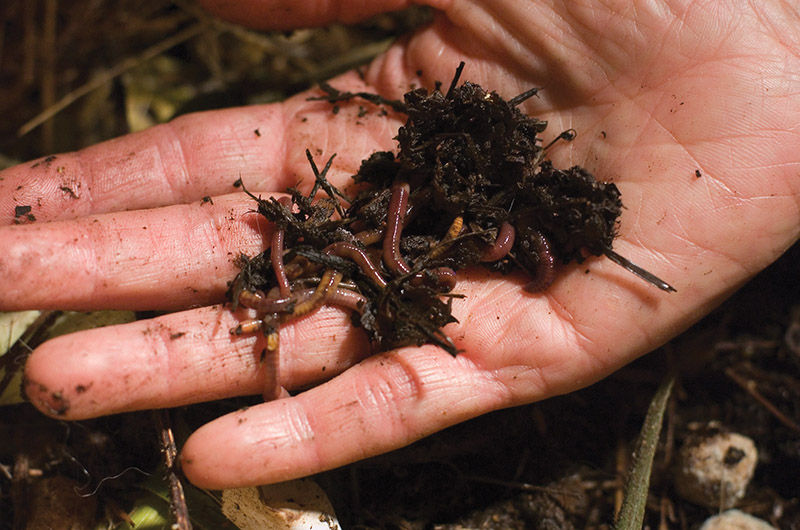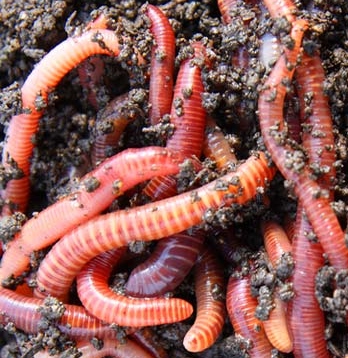The Duty of Red Wigglers in Lasting Horticulture
The combination of red wigglers right into sustainable gardening techniques offers an engaging strategy to enhancing dirt wellness and decreasing natural waste. The effects of using red wigglers expand beyond plain composting; their role in forming a more sustainable future warrants a much deeper expedition of their benefits and useful applications.
Recognizing Red Wigglers
Red wigglers, scientifically understood as Eisenia fetida, are a types of earthworm renowned for their duty in lasting gardening and composting practices - red wigglers. These worms flourish in decaying raw material, making them especially reliable in transforming kitchen scraps and yard waste into nutrient-rich compost. Unlike conventional earthworms, red wigglers have a greater resistance for differing dampness degrees and can prosper in settings with abundant organic material
(eisenia fetida worms for sale)Classically, red wigglers are smaller than their earthworm counterparts, normally measuring in between 3 to 4 inches in length. They have a reddish-brown coloration and have a fractional body framework that aids in their burrowing and feeding tasks. These organisms are hermaphroditic, suggesting each individual has both male and female reproductive body organs, which enables efficient populace growth under ideal conditions.
The environment preferences of red wigglers consist of wet, dark atmospheres rich in organic content, such as garden compost bins or worm farms. Their eco-friendly function extends beyond composting; they are essential in freshening the soil and facilitating vitamins and mineral cycling, which inevitably adds to healthier yard environments. red wigglers. Understanding the biology and habits of red wigglers is important for those looking for to execute reliable vermicomposting in sustainable horticulture
Benefits of Vermicomposting
Vermicomposting deals various benefits that improve lasting gardening techniques and contribute to environmental health and wellness. One of the key benefits is the transformation of natural waste into nutrient-rich compost, which improves dirt structure and fertility. The spreadings produced by red wigglers are loaded with advantageous bacteria and crucial nutrients, making them an outstanding natural fertilizer.
In addition, vermicomposting dramatically decreases garbage dump waste. By diverting kitchen scraps and lawn waste from garbage dumps, this technique not just reduces methane discharges-- a potent greenhouse gas-- but likewise advertises a round economic climate, where waste is repurposed as a resource.
Another advantage is the enhancement of dirt aeration and drain (red wigglers). The burrowing activity of red wigglers develops channels in the soil, allowing air and water to penetrate more easily, thus cultivating a healthier origin system for plants
In addition, vermicomposting can be done on a tiny range, making it obtainable for city garden enthusiasts and those with restricted area. This method encourages environmental stewardship and recognition, as people end up being much more engaged with their waste monitoring techniques. Eventually, vermicomposting represents a sustainable, reliable, and eco-friendly strategy to horticulture that benefits both plants and the planet.
Just How to Begin Vermicomposting
Starting your own vermicomposting system can be a gratifying endeavor that boosts your sustainable gardening practices. To start, choose an appropriate container, such as a plastic container or wood box, with good drainage and air flow. The size will certainly rely on the volume of kitchen scraps you create; a container of 10-14 gallons commonly is sufficient for a home.
Next, prepare the bed linen material. Shredded paper, cardboard, and coconut coir are exceptional options, giving a comfortable habitat for the red wigglers. Purpose for a bed linen deepness of regarding 4-6 inches, which should be wet however not soggy.
As soon as the bed linen is developed, introduce your worms. Red wigglers (Eisenia fetida) are one of the most suitable for composting. Beginning with roughly one pound of worms for each 2-3 pounds of kitchen area scraps weekly.
Begin including kitchen area waste, staying clear of meat, dairy, and oily foods, as these can bring in insects and develop odors. On a regular basis keep track of the container's dampness degrees and temperature, ensuring it continues to be within the perfect array for worm task. With these preliminary actions, you'll be well on your way to producing nutrient-rich garden compost for your garden.
Preserving a Healthy And Balanced Worm Container
A flourishing worm container calls for constant their website treatment and focus to maintain an ideal setting for the red wigglers. Key aspects to check include moisture degrees, temperature level, and food supply. Maintaining a wetness degree akin to a wrung-out sponge is important; way too much water can result in anaerobic problems, while as well little can dry out the worms.
Temperature is additionally crucial, as red wigglers flourish in a variety of 55 to 77 levels Fahrenheit. Severe temperature levels can emphasize the worms, potentially causing death. Therefore, placing the bin in a climate-controlled area or making use of insulating materials can aid control temperature level variations.

Last but not least, aeration is vital. Consistently turning the bedding and utilizing a fork or shovel can avoid compaction and advertise air flow, ensuring a healthy and balanced, thriving setting for the red wigglers. By adhering to these techniques, gardeners can preserve a productive worm container that supports sustainable horticulture efforts.
Influence on Soil Wellness
Enhancing soil wellness through using red wigglers is a fundamental element of lasting gardening. These worms, recognized scientifically as Eisenia fetida, play a vital role in enhancing dirt structure and fertility. By taking in raw material, red wigglers damage down intricate materials into less complex compounds, a process called vermicomposting. Completion product, worm spreadings, is abundant in important nutrients, consisting of nitrogen, phosphorus, and potassium, which are vital for plant growth.

(eisenia fetida worms for sale)Studies have actually revealed that soils enhanced with worm spreadings exhibit enhanced microbial task and boosted fertility, resulting in greater plant returns. By integrating red wigglers into horticulture practices, garden enthusiasts not just improve their dirt but also contribute to a much more lasting farming system, stressing the interconnectedness of dirt wellness and environmental stewardship.

Verdict
In verdict, red wigglers significantly contribute to sustainable gardening via their reliable vermicomposting techniques. Their capacity to convert natural waste right into nutrient-rich garden compost improves soil fertility and sustains a varied microbial ecological community. Moreover, their burrowing activity improves dirt oygenation and water retention, benefiting plant health. By promoting waste reduction and cultivating a circular economy, red wigglers arise as crucial elements in environment-friendly gardening campaigns, emphasizing their important role in ecological sustainability.